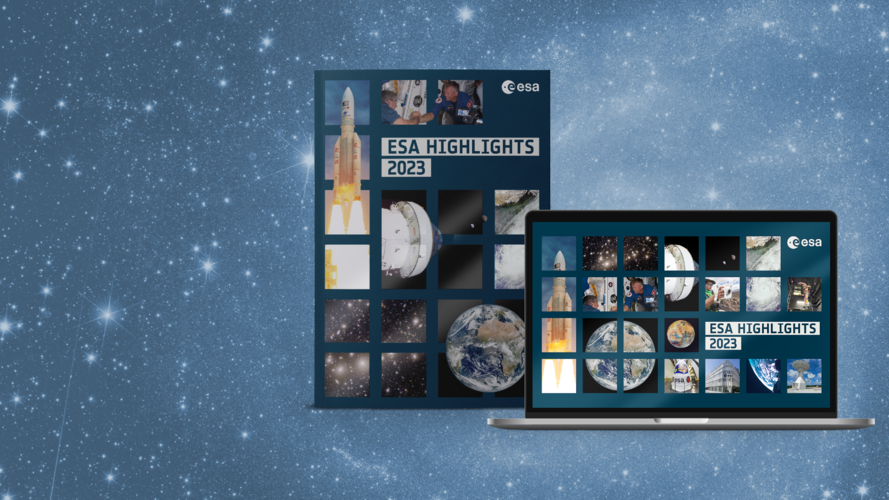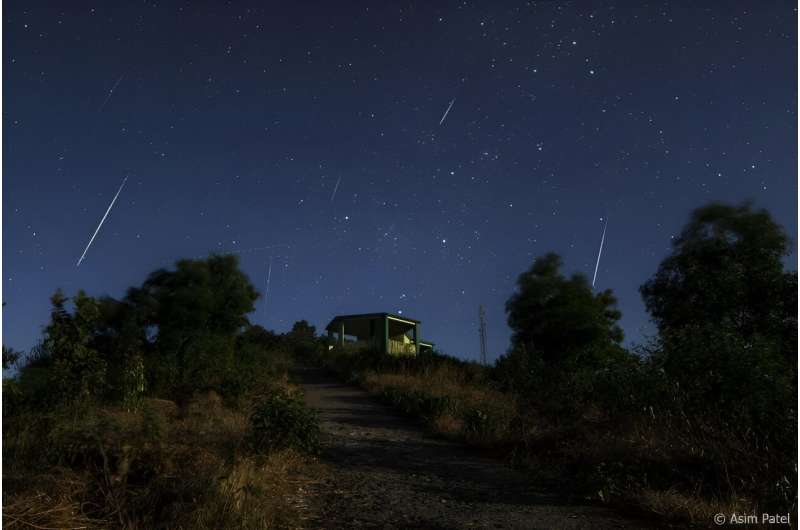
Copernical Team
14-inch spacecraft delivers new details about 'hot Jupiters'
 A spacecraft the size of a cereal box has collected precise measurements of the atmospheres of large and puffy planets called "hot Jupiters." The findings, led by a team from the University of Colorado Boulder, could help reveal how the atmospheres around these and a host of other worlds are escaping into space.
The observations are the first results to come from a hard-working NASA spacec
A spacecraft the size of a cereal box has collected precise measurements of the atmospheres of large and puffy planets called "hot Jupiters." The findings, led by a team from the University of Colorado Boulder, could help reveal how the atmospheres around these and a host of other worlds are escaping into space.
The observations are the first results to come from a hard-working NASA spacec Seeing and Believing: 15 Years of Exoplanet Images
 First there was a gloriously dusty disk. Then the traceable tracks of "exocomets." But 15 years ago this fall, the star system Beta Pictoris yielded one of the most iconic pictures in astrophysics: a direct image of a planet orbiting another star.
The young, bright star, some 63 light-years distant and visible to the naked eye, all but overwhelmed the faint light of the planet. When astron
First there was a gloriously dusty disk. Then the traceable tracks of "exocomets." But 15 years ago this fall, the star system Beta Pictoris yielded one of the most iconic pictures in astrophysics: a direct image of a planet orbiting another star.
The young, bright star, some 63 light-years distant and visible to the naked eye, all but overwhelmed the faint light of the planet. When astron Unlocking Lunar Mysteries: Chang'e-5 Mission Sheds Light on Moon's Surface Weathering
 In a groundbreaking development, scientists from the China University of Geosciences, Wuhan, in collaboration with researchers from Brown University and the University of Hawaii, have successfully measured the maturity index of lunar soil brought back by China's Chang'e-5 mission. This achievement marks a significant milestone in lunar research, shedding light on the space weathering processes o
In a groundbreaking development, scientists from the China University of Geosciences, Wuhan, in collaboration with researchers from Brown University and the University of Hawaii, have successfully measured the maturity index of lunar soil brought back by China's Chang'e-5 mission. This achievement marks a significant milestone in lunar research, shedding light on the space weathering processes o NASA's Perseverance Rover Deciphers Ancient History of Martian Lake
 Now at 1,000 days on Mars, the mission has traversed an ancient river and lake system, collecting valuable samples along the way.
Marking its 1,000th Martian day on the Red Planet, NASA's Perseverance rover recently completed its exploration of the ancient river delta that holds evidence of a lake that filled Jezero Crater billions of years ago. The six-wheeled scientist has to date collec
Now at 1,000 days on Mars, the mission has traversed an ancient river and lake system, collecting valuable samples along the way.
Marking its 1,000th Martian day on the Red Planet, NASA's Perseverance rover recently completed its exploration of the ancient river delta that holds evidence of a lake that filled Jezero Crater billions of years ago. The six-wheeled scientist has to date collec A Rinse and Repeat Kind of Plan: Sols 4035-4036
 Earth planning date: Monday, December 11, 2023: Today's 2-sol plan was a "Touch and Go" plan, where we do some short science activities (ChemCam and/or MAHLI and APXS) in our workspace early in the morning and then drive to a new workspace. Unfortunately, due to a minor issue with the arm, the weekend plan only partially executed. As Susane reported on Friday, we had planned to DRT the dark tone
Earth planning date: Monday, December 11, 2023: Today's 2-sol plan was a "Touch and Go" plan, where we do some short science activities (ChemCam and/or MAHLI and APXS) in our workspace early in the morning and then drive to a new workspace. Unfortunately, due to a minor issue with the arm, the weekend plan only partially executed. As Susane reported on Friday, we had planned to DRT the dark tone France 2030 boosts HyPrSpace and Partners with 35M Euro for Micro-Launcher Development
 HyPrSpace, in collaboration with Telespazio France and CT Ingenierie, has recently secured a significant funding boost of euro 35 million for the Agile Space Access Development Project #1 (PADA1). This project, part of the France 2030 initiative, focuses on the development of innovative space access solutions, marking a significant step in the nation's space industry.
The PADA1 consortium,
HyPrSpace, in collaboration with Telespazio France and CT Ingenierie, has recently secured a significant funding boost of euro 35 million for the Agile Space Access Development Project #1 (PADA1). This project, part of the France 2030 initiative, focuses on the development of innovative space access solutions, marking a significant step in the nation's space industry.
The PADA1 consortium, NASA's Commercial Partners Continue Progress on New Space Stations
 Three NASA-funded commercial space station partners are on track for the design and development of their orbital destinations and the transition of agency's low Earth orbit needs from the International Space Station.
"We are ending the year on a high note with multiple important milestones being completed by our partners," said Angela Hart, manager of the Commercial Low Earth Orbit Develop
Three NASA-funded commercial space station partners are on track for the design and development of their orbital destinations and the transition of agency's low Earth orbit needs from the International Space Station.
"We are ending the year on a high note with multiple important milestones being completed by our partners," said Angela Hart, manager of the Commercial Low Earth Orbit Develop Engineers Working to Resolve Issue With Voyager 1 Computer
 Engineers are working to resolve an issue with one of Voyager 1's three onboard computers, called the flight data system (FDS). The spacecraft is receiving and executing commands sent from Earth; however, the FDS is not communicating properly with one of the probe's subsystems, called the telecommunications unit (TMU). As a result, no science or engineering data is being sent back to Earth.
Engineers are working to resolve an issue with one of Voyager 1's three onboard computers, called the flight data system (FDS). The spacecraft is receiving and executing commands sent from Earth; however, the FDS is not communicating properly with one of the probe's subsystems, called the telecommunications unit (TMU). As a result, no science or engineering data is being sent back to Earth. ESA Highlights: the best of ESA in 2023

ESA Highlights: the best of ESA in 2023
ESA Highlights is a visual showcase of some of ESA’s key achievements over a 12-month period.
How and when to see the Geminid meteor shower in the UK

Stargazers will have a chance to enjoy one of the most spectacular meteor showers of the year later this week, as the Geminids reach their peak.
Under perfect conditions, up to 150 meteors an hour could light up the night sky from Thursday into Friday (December 14–15), although the majority of observers can expect to see closer to 40 or 50 an hour as long as skies are clear.
Most meteor showers are caused by comets but the Geminids are unusual because they originate from the debris of an asteroid known as 3200 Phaethon.
They also have a greenish hue when they burn up in the Earth's atmosphere, rather than being colorless or white like other meteors. This is because of their chemical composition—oxygen, magnesium and nickel usually produce a green color.
The good news for skywatchers is that the arrival of a new moon that is just 1% illuminated should make for ideal viewing conditions, because there will less light pollution to weaken what should be a dazzling show.
